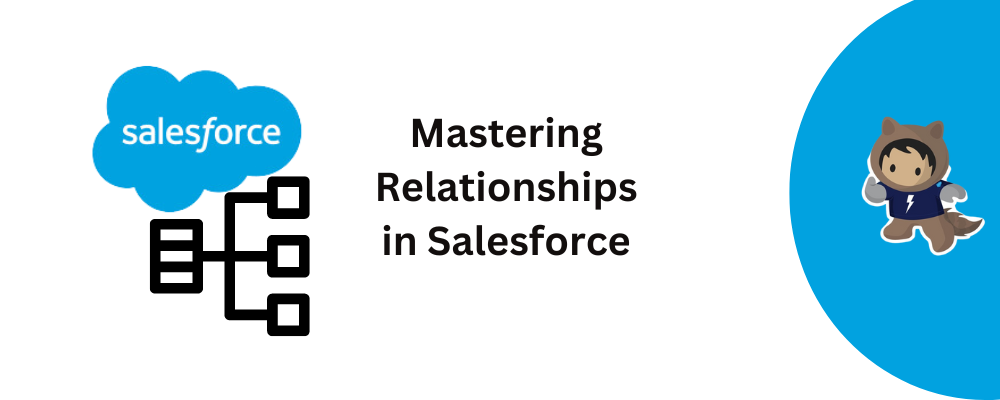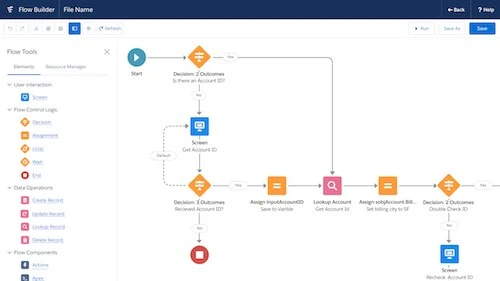Understanding relationships in Salesforce is akin to mastering the foundation of a thriving ecosystem. In Salesforce, relationships define how data is connected, ensuring seamless integration and management across various modules. This guide delves deep into the intricacies of relationships in Salesforce, offering insights, tips, and best practices to enhance your CRM proficiency.
What are Relationships in Salesforce?
Relationships in Salesforce refer to the way different objects within the system are connected. These connections facilitate the flow of data and enable a holistic view of business processes, ensuring that all relevant information is easily accessible and interconnected.
Parent and Child Record Relationships
Types of Relationships in Salesforce
Salesforce offers several types of relationships to suit different business needs. Understanding these relationships is crucial for setting up an effective CRM system.
1. Lookup Relationships
Lookup relationships are the most basic form of relationships in Salesforce. They link two objects together so you can look up one object from the related items on another object.
- Example: Linking a Contact to an Account.
- Use Case: When you need to connect records without impacting their ownership or sharing settings.
2. Master-Detail Relationships
Master-detail relationships are more tightly bound than lookup relationships. Here, the detail (or child) object’s existence depends on the master (or parent) object.
- Example: Linking an Order (detail) to a Customer (master).
- Use Case: When you need cascading record deletion and need to ensure the child record cannot exist without the parent.
3. Many-to-Many Relationships
Many-to-many relationships allow each record of one object to be linked to multiple records of another object and vice versa. This is achieved through a junction object.
- Example: Linking Students and Courses.
- Use Case: When objects need to be linked in a flexible manner, like courses assigned to multiple students and vice versa.
Understanding Hierarchical Relationships
Hierarchical relationships are a special type of lookup relationship available only for the user object. This allows users to create a hierarchy among users, such as managers and subordinates.
Creating and Managing Relationships in Salesforce
To effectively utilize Salesforce relationships, it’s essential to know how to create and manage them.
Lookup Relationships
- Navigate to Object Manager.
- Select the object you want to create a relationship for.
- Click on Fields & Relationships and then New.
- Choose Lookup Relationship and follow the prompts.

Master-Detail Relationships
- Similar to lookup relationships, navigate to Object Manager.
- Select the appropriate object.
- Choose Fields & Relationships and click New.
- Select Master-Detail Relationship and follow the guided setup.

Many-to-Many Relationships

- Create a Junction Object.
- Establish two master-detail relationships between the junction object and the other two objects.
Best Practices for Managing Relationships
- Ensure Data Integrity: Regularly audit relationships to maintain data integrity.
- Optimize Performance: Optimize queries involving relationships for better performance.
- Implement Security: Use proper sharing and security settings to manage data visibility.
Common Use Cases for Relationships in Salesforce
Understanding practical applications of relationships in Salesforce helps in leveraging them effectively.
Sales and Customer Management
- Account and Contact Relationship: Link contacts to accounts to manage customer interactions.
- Opportunity and Product Relationship: Connect opportunities with products to track sales effectively.
Project Management
- Task and Project Relationship: Assign tasks to projects to streamline project management processes.
- Resource and Project Relationship: Allocate resources to projects for optimal resource management.
Service Management
- Case and Solution Relationship: Link cases with solutions to enhance customer support.
- Service Contract and Case Relationship: Manage service contracts and related cases efficiently.
Advanced Relationship Features in Salesforce
Salesforce provides advanced features to enhance relationship management.
Schema Builder
Schema Builder is a dynamic environment to visualize and manage relationships. It offers a drag-and-drop interface to create and modify relationships easily.
Salesforce Connect
Salesforce Connect enables integration with external data sources. It helps in establishing relationships with data stored outside Salesforce, expanding the scope of your CRM.
Troubleshooting Common Relationship Issues
Even with the best setup, issues can arise. Here are common problems and their solutions.
Circular Relationships
Avoid creating circular references as they can complicate data integrity and cause errors.
Orphaned Records
Orphaned records occur when the parent record is deleted but the child record remains. Implement appropriate cascading rules to prevent this.
Performance Degradation
Complex relationships can slow down performance. Regularly monitor and optimize queries and indexes.
Conclusion
Mastering relationships in Salesforce is essential for a robust and efficient CRM system. By understanding the various types of relationships and their practical applications, you can ensure seamless data integration and management. Utilize advanced features like Schema Builder and Salesforce Connect to enhance your setup and troubleshoot issues proactively to maintain a smooth-running system.
FAQs
1. What is a lookup relationship in Salesforce?
A lookup relationship links two objects together, allowing you to look up one object from the related items on another object without impacting their ownership.
2. How does a master-detail relationship differ from a lookup relationship?
In a master-detail relationship, the detail (child) object’s existence depends on the master (parent) object, whereas in a lookup relationship, objects are linked without dependency.
3. What are junction objects in Salesforce?
Junction objects are used to create many-to-many relationships between two objects. They contain two master-detail relationships to facilitate this connection.
4. How can I visualize relationships in Salesforce?
You can use the Schema Builder, a dynamic tool that provides a visual representation of objects and their relationships in a drag-and-drop interface.
5. What should I do if I encounter performance issues with relationships?
Optimize your queries and indexes, monitor regularly, and ensure your relationships are not overly complex to prevent performance degradation.




